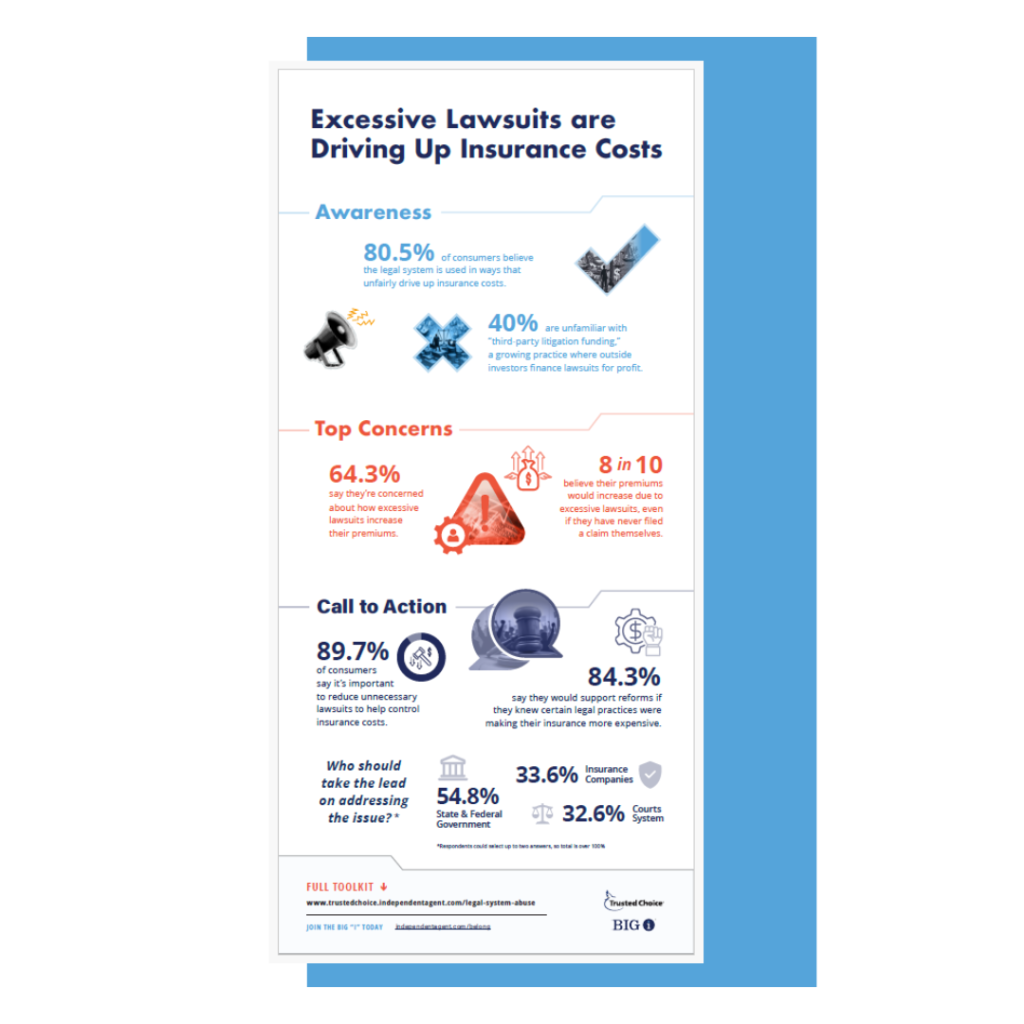| Abandonment of Employment |
Engaging in an activity clearly not intended for the advancement of the employer nor directed by or anticipated by the employer. Includes any activity in direct contradiction to the rules, requests or expectations of the employer. |
| Absolute Liability |
See Strict Liability“ |
| Accident |
“Accident” carries with it the implied application of definite in time and place, and unintended. |
| Adhesion |
Insurance is a contract of adhesion” meaning that the insured is stuck” with the provisions. Because it is a contract of adhesion, the doctrine of Contra Proferentem applies. |
| Aleatory |
An event dependent on chance, luck or an uncertain event. |
| Assault |
No actual bodily contact, only the threat of bodily injury by force. Such threat is intentional and unlawfully directed towards another person such that the other party as a reasonable fear that injury is likely to occur. The apparent ability to carry out such a threat must also exist. (See Battery“) |
| Assumption of Risk |
A defense against charges of negligence barring or severely limiting an individual’s recovery under the tort of negligence. The defendant must prove that 1) the plaintiff was reasonably aware of and appreciated the danger involved; 2) the plaintiff voluntarily exposed himself to the danger; and 3) the assumed danger was the proximate cause of the injury or damage. |
| Bailee |
The individual or entity taking or having possession of another’s personal property for care, service, or keeping. |
| Bailment |
Involves the transfer of possession of personal property from one party to another for care, service, or keeping. Bailments are generally governed by common law. There are three types of bailment: 1) for the sole benefit of the bailor; 2) for the sole benefit of the bailee; and 3) for mutual benefit. |
| Bailor |
The individual or entity granting possession of their personal property to another party for care, service, or keeping. |
| Battery |
Actual physical contact with another individual resulting in physical injury. Such contact is not limited to physical beating but can also refer to physical restraint of a person. Battery can exist without assault; an example would be someone just grabbing another person and beating them without provocation or warning. (See Assault“) |
| Bodily Injury |
Bodily Injury in insurance means bodily harm, sickness or disease sustained by a person, including death resulting from any of these at any time. Mental anguish and loss of service is, at times, included as part of this definition depending on the jurisdiction. |
| Broad Transfer |
Provides the greatest scope of contractual risk transfer and requires the transferee to indemnify and hold harmless the transferor from all liability arising out of an incident, even if the act is committed solely by the transferor. This may qualify as an exculpatory contract and is illegal in some jurisdictions because the wording is considered “unconscionable.” (See Limited Transfer” and Intermediate Transfer“) |
| Broker |
A broker represents the insurance buyer in the negotiation of coverage. A broker cannot bind the insurance carrier to anything, nor do they speak on behalf of the insurance carrier. Brokers can only negotiate and speak on behalf of the insured in the placement of coverage. Brokers are to act in the best interest of the client (the insured) in the placement of coverage and claims settlement. |
| Causal Nexus |
A Latin term meaning “to bind.” Legally it means to link a cause and effect. A causal nexus exists if the result is a natural and reasonable outcome or consequence of the activity. This does not equate to or require the same level of connection as does “proximate cause.” |
| Cause in Fact |
Without the actions of the supposed at-fault party there would be no injury or damage. Analyzed by the question, If the wrongdoer’s act or omission is eliminated, would the injury or damage have occurred anyway?” |
| Chattel |
Movable or immovable personal property. Chattel does not include real estate or structures attached to the real estate. A chattel includes tangible and intangible personal property. Tangible personal property is defined as things that can be moved, touched or felt (equipment, clothes, art work, etc.). Intangible chattel includes negotiable instruments, securities, copyrights, patents and other such property. Chattel is also defined as a slave (i.e. “I am my employer’s chattel”). |
| Collateral Estoppel |
A judgment of fact found in one case prevents a party from trying to deny that fact in another case. The parties are permanently bound by the prior ruling. (See Estoppel” and Equitable Estoppel“) |
| Collateral Source Rule |
A collateral source is another source of recovery. The collateral source rule states that damages assessed against the tortfeasor are not to be reduced by any other sources of recovery available to the injured party. |
| Comparative Negligence |
Each party’s relative “fault” for the subject accident is compared. The injured party’s (plaintiff’s) ultimate damage award is reduced by his percentage of culpability. Three variations of the comparative fault rule are utilized across the US. In each variation, the damaged party’s award is reduced by the percentage of their own contribution to the incident:
- Pure Comparative Fault: Allows the damaged party to recover even if they are 99 percent at fault. Any award is reduced by their contribution to the injury or damage. Thirteen states apply this rule of comparative negligence: Alaska, Ariz., Calif., Fla., Ky., La., Miss., Mo., N.M., N.Y., R.I., S.D., and Wash;
- Modified Comparative – 50 percent Bar: A damaged party cannot recover if they are 50 percent or more at fault. They are able to recover from 0 percent to 49 percent at fault. Twelve states apply this rule of comparative negligence: Ark., Colo., Ga., Idaho, Kan., Maine, Neb., N.D., Okla., Tenn., Utah, and W. Va.; and
- Modified Comparative – 51 percent Bar: A damaged party can recover from another party provided they are no more than 50 percent at fault. Twenty-one states apply this version of comparative negligence: Conn., Del., Hawaii, Ill., Ind., Iowa, Mass., Mich., Minn., Mont., Nev., N.H., N.J., Ohio, Ore., Pa., S.C., Texas, Vt., Wis., and Wyo.
|
| Compensatory Damages |
Payment for actual injury or economic loss. Compensatory damages are further divided into Special Damages and General Damages. (See Punitive Damages“) |
| Concealment |
A lie by omission; to prevent information from being known. Improving the perception of something by withholding truth that may change a decision. Concealment may actually be an unintentional act. The concealment of a material fact results in a policy becoming void. |
| Conditions Precedent |
Conditions that must be fulfilled to initially activate the insurance contract. |
| Conditions Subsequent |
Acts or duties that must be accomplished after the loss in order to receive the benefits promised by the policy. |
| Contra Proferentem |
Latin for against the offeror.” This is a doctrine of contract interpretation stating that any ambiguity in the contract is found in favor of the party that did not draft the contract. |
| Contractual Risk Transfer |
A formal agreement between two parties whereby one agrees to indemnify and hold harmless another party for specified acts. The intended goal of contractual risk transfer is to place the financial burden of a loss on the party best able to control and prevent the loss. The VU has a series of articles on Contractual Risk Transfer. |
| Contributory Negligence |
Doctrine of defense stating that if the injured person was even partially culpable in causing or aggravating his own injury he is barred from any recovery from the other party. This is an absolute defense. (See Last Clear Chance“) |
| Crime |
From the Latin, crimen,” meaning I decide.” The individual makes a decision to ignore the law. Crimes are against society as a whole. |
| Crumbling Skull |
A legal theory sometimes used as a defense to or argument against application of the “Eggshell Skull” rule. The principle behind this defense is that the result would have been the same whether or not the accused wrongdoer was involved. |
| Damages |
Damages serve a dual purpose: 1) as a monetary remedy for a person, persons or entity against which a wrong has been committed and/or an injury suffered. The remedy may only be a part of 2) the total sum imposed on a tortfeasor for their violation of a duty owed. Combined, “remedy” and the sum “imposed” are two sides of the same coin, so to speak.
Before damages are imposed there must be a duty owed or created (tort, contract or statute), a breach and resulting injury. There are several types of “damages” potentially owed: Compensatory Damages, Punitive Damages and Liquidated Damages.
|
| Dangerous Instrumentality Doctrine |
An absolute/strict liability Ownership doctrine. This does not require any particular conduct, merely the presence of something that could cause harm. To be considered a dangerous instrumentality, the individual or entity does not necessarily have to set off the explosives, the mere presence is enough to be considered a dangerous instrumentality. The basis of this doctrine is rooted in property rights; owners and occupiers of land have the right to expect peaceful and safe enjoyment of the property they occupy. Adjacent property owners have the duty (responsibility) to use their land in such a way as to protect the surrounding owner’s rights. If the owner or occupier of land stores or maintains a dangerous instrumentality, he is held strictly liable for any injury that occurs because he has exposed the neighborhood to an unreasonable risk of harm. Animals, especially vicious animals, may fall under the umbrella of a dangerous instrumentality. |
| De Facto Employee |
De facto means “in fact or in reality.” Employers may call a de facto employee an independent contractor when they are “in fact” an employee. The degree of control often influences the worker’s classification as a true independent contractor or a de facto employee. |
| De Jure Employee |
De jure means “by right, according to the law.” A de jure employee is an employee created by an act of law. In most states, injured employees of an uninsured subcontractor become the responsibility of the general contractor; they become the “de jure employees” of the general contractor by action of workers’ compensation law. |
| Derivative Suit |
A suit brought by one or several shareholders on behalf of a publicly held corporation. It “derives” out of the shareholders perceived mismanagement of the corporation by an individual or several members of the directors or officers. Derivative suits are often filed along with security class action suits. Securities suits are filed in Federal courts, where derivative suits are generally filed in state courts. |
| Diminution of Value |
The difference in the fair market value of personal property (chattel) following damage and repair, and what the property would have been worth had no damage occurred. The theory is based on the market belief that personal property which has suffered damage and been repaired is worth less than similar property which has never been damaged, even when the damaged property has been restored incorporating parts of like kind and quality. |
| Doctrinal Employer-Employee Relationship (Special Employer) |
1) The employee made a contract of hire, express or implied, with the special employer. In essence, has the direct employer volunteered or directed the employee to work for the special employer and has the employee agreed to such assignment; 2) The work being done essentially that of the special employer; and 3) The special employer has the right to control the details of the work. |
| Doctrine of Reasonable Expectation |
Mandates that the insurance contract be interpreted in the same way a reasonable buyer would interpret it; even to the point of finding coverage where it may not expressly exist. The doctrine requires that: 1) The insurance contract is interpreted the way a reasonably intelligent person, who has not been trained in law, would interpret it; and 2) Where a provision has more than one reasonable interpretation, the findings must favor the objectively weaker party the insured. (See, Debating Ambiguities in Insurance Contracts“) |
| Eggshell Skull |
A legal term based in tort and criminal law that states that tortfeasors take the injured party as they find them. Also known as the “thin skull” rule, it states that if the injured party has a condition that predisposes them to greater injury than the normal human, the tortfeasor is not relieved of any of the costs resulting from the bodily injury just because of the condition. All injury and the costs associated with such injuries are assigned to the individual that committed the initial wrongful act, regardless of the ability to foresee the results or the fact that that the injury is made worse by a pre-existing condition or predisposition to injury.
An example might be an auto accident in which the non-negligent party has the skeletal disease known as “brittle bone” disorder. The accident causes excessive broken bones due to the disorder; however, the at-fault driver is not relieved of the medical costs resulting from the injury just because of the injured party’s predisposition to injury.
|
| Ejusdem Generis |
Latin term meaning, of the same kind.” In the construction of contracts, when certain things are enumerated, and then a phrase is used which might be construed to include other things, it is generally confined to things of the same type. General words are not to be construed in their widest extent, but are to be held as applying only to persons or things of the same general kind or class as those specifically mentioned. |
| Employee |
A person hired to perform certain services or tasks for particular wages or salary under the control of another (the employer); or a worker hired to perform a specific job usual and customary to the employer’s business operation in exchange for money or other remuneration. |
| Equitable Estoppel |
Equitable Estoppel prevents a person from adopting a new position that contradicts a previous position created by words, silence, or actions if allowing the adoption of the new position would unfairly harm the person who relied on the previous position to his or her detriment. Also known as estoppel in pais. (See Estoppel” and Collateral Estoppel“) |
| Escheat |
A common law doctrine to assure that unclaimed property of an individual who dies intestate is not left without an owner. In modern terms, escheat simply means that the property of an intestate without living heirs (see “Intestacy“) passes to the state. If an heir within the state’s definition is later found, property can be reclaimed by that individual. Escheat statutes generally govern the procedure that must be undertaken to find a rightful heir. If the effort is unsuccessful, the property is to be used for the public good. The burden of proof that there is no rightful heir falls on the state, with all rules of evidence applicable. Property of veterans who die intestate reverts to the Federal government. |
| Estoppel |
Simply means to “stop,” “block” or “not allow” a party to take a new position that contradicts previous actions or conditions upon which an expectation was created. Such expectation is reasonably relied on by an individual or entity to their detriment. Two broad classes of estoppel within which other types of estoppel exist include: 1) equitable estoppel; and 2) collateral estoppel. |
| Exculpatory |
An agreement altering tort and contract law. The root term “exculpate” means to hold another blameless for their future actions. Commonly used in waivers to protect one party against injury suits from another party while participating in activities that may prove inherently dangerous. Exculpatory agreements generally cannot be used to avoid statutory requirements, common law duties, criminal penalties or negligence in tort (duties owed to the public cannot be contracted away). If there is unequal bargaining strength between the parties to the contract, an exculpatory clause may be considered unconscionable and thus unenforceable. These rules vary by jurisdiction. |
| Express Contract |
An express contract is one that has been reduced to writing; however, some oral contracts may be given the weight of express contracts provided all requirements of a contract are present (offer, acceptance, consideration, etc.). (See: Implied Contract“) |
| Force Majeure |
A French phrase that translates “greater or superior force.” Force majeure is an important contractual provision that excuses a party from liability for the failure to comply with the provisions of the contract due directly to events beyond the control of that party. Force majeure events can include natural disasters, war or uncontrollable failure of a third party to meet its obligations. The potentially liable party is only excused if the event causing non-compliance could not have been foreseen or avoided by the exercise of due diligence in planning and execution. |
| Fraud |
A false statement or act intentionally committed by one to gain advantage over or induce another to a particular action to the detriment of the second (the defrauded individual). This is a catch-all category commonly tied in with “concealment” and “misrepresentation.” The main distinction with “fraud” is that it is an outright intentional act by the defrauding party. Fraud of a “material” nature will void coverage and may also be a criminal act. |
| General Damages |
A class of compensatory damages having no basis for calculation and include pain and suffering, mental anguish, or loss of reputation. |
| Hold Harmless |
A contract provision requiring the transferee to stand in place of or to accept responsibility for any penalty placed upon the transferor. See, Hold Harmless Agreements Aren’t Harmless“ |
| Indemnitor |
The party called on to respond financially. This can include the “Transferee” or an insurance company. |
| Implied Contract |
Implied contracts are oral or “understood” agreements or promises between parties generally created by actions or the assumed intentions of the parties or the surrounding circumstances. |
| Indemnify/Indemnity |
To return the insured, as closely as possible, to the same financial condition that existed prior to the loss or would have existed had no loss occurred without enrichment or improved position. |
| Indemnitor |
The party called on to respond financially. This can include the “Transferee” or an insurance company. |
| Indemnity Agreement |
An agreement that transfers the financial risk of a particular activity from one party to another party. |
| Independent Contractor |
An entity with whom a principal/owner directly contracts to perform a certain task or tasks. Independent contractors are generally engaged to perform operations not within the usual trade or business of the principal and such tasks are contract-specific. All work required of the contract is performed by the independent contractor and employees. See, 17 Tests to Decide: Employee or Independent Contractor“ |
| Intellectual Property |
Creations of the mind including inventions, writings, designs, and trade secrets. |
| Intervening Act |
An act that is or should be reasonably foreseeable and thus does not relieve the original wrongdoer of his liability for the injury because the intervening act may be part of the chain of events leading to injury or damage. |
| Intestacy |
An individual, owning property in excess of debts and expenses (a positive net worth), who dies without a legally binding will or declaration. Common law in America allows all property, real and personal, to pass to provable heirs of intestate individuals (the law of descent). Some state statutes limit the degrees of separation for an individual to qualify as an heir (i.e. “no more than five degrees from the decedent, not including the decedent” as specified in one state law). Under current law, if no heir of the intestate individual meeting the requirements can be found, the property (real property and chattel) escheats to the “crown” (the state). Laws govern how the property will be used by the state and which agency is responsible for its distribution. |
| Intermediate Transfer |
The transferee agrees to accept the financial consequences of occurrences caused in whole or in part by its negligence. This includes if the transferor or another entity contributes to the loss in some way. (See, Limited Transfer” and Broad Transfer“) |
| Inverse Condemnation |
A governmental action that diminishes or in practicality removes all value of an individual’s property without just compensation. Such action amounts to the regulatory taking of property without actually condemning it and paying the owner its fair market value. The last line of the Fifth Amendment reads as follows: “nor shall private property be taken for public use, without just compensation.”
Such actions generally assume the form of a denial of a permit or the blocking of an individual property owner’s ability to use his property in a manner consistent with local zoning use laws; or by enforcing eminent domain in the taking of some property but not all, thus rendering the remaining property useless; government violating an individual’s right to quiet enjoyment of his property by building an airport next to his house for example (the ultimate effect being the nearly complete devaluation of the property); or other such over-regulation rendering the property valueless.
|
| Last Clear Chance |
A doctrine in tort law applicable in jurisdictions that subscribe to the contributory negligence doctrine. Last clear chance allows a plaintiff that is contributorily negligent to recover if he is able to prove that the defendant (most at-fault party) had the last opportunity to avoid the accident. Essentially, the plaintiff’s negligence is no longer part of the equation. The defendant had time and ability to prevent the accident and failed to take necessary action.
Restated: A showing, by the plaintiff, of something new and sequential which affords the defendant a fresh opportunity (of which the defendant fails to avail himself or herself) to avert the consequence of his original negligence.
There are four applicable categories of Last Clear Chance applied by the five remaining jurisdictions utilizing the contributory negligence rule:
- Helpless Plaintiff: The plaintiff’s initial negligence put him in a position from which he was powerless to escape by ordinary means. The defendant detects the danger with ample time to respond, but fails to act as a “reasonable” person would;
- Inattentive plaintiff: The plaintiff did not pay attention to his surroundings putting himself in danger. The defendant discovers the peril and has time to respond, but fails to respond to avoid the accident;
- Observant defendant: The defendant actually sees the plaintiff in time to react and safely avoid the incident but negligently fails to respond as a reasonable person would; or
- Inattentive defendant: The defendant simply fails to pay attention as a reasonable person should (cell phone is a good example) and is unable to respond to the plaintiff’s helpless condition in time to avoid the accident.
|
| Legal Liability |
Liability imposed by the courts (common law) or by statute on any person or entity responsible for the financial injury or damage suffered by another person, group, or entity. To be found legally liable, the person or entity must 1) be found guilty of negligent conduct; 2) the negligent conduct must be the cause in fact and proximate cause of the injury or damage; and 3) the injured party must suffer actual loss or damage. For more detail, see, How Does a Person Become Legally Liable“ |
| Legal Person (a.k.a. Juridical Person) |
A legal fiction, a “person” created by statute and born” with the filing of articles of incorporation or organization. These legal persons are given the right to own property, sue and be sued. (See Person“) |
| Libel/Slander |
False statements broadcast about a person as fact not opinion. These statements do not have to be made with the intent to harm or shame to allow for a tort claim; but if done with malice, the injured party can sue for general damages in addition to special damages. Libelous statements are generally written or broadcast through the media (television, radio and the Internet) while slander deals with the spoken word (it doesn’t linger and is generally directed to a known audience). Both terms can be classified as “defamation.”
Defenses against charges of defamation include:
- Truth. Truth is an absolute defense; if the information broadcast is true, the “injured” party does not have a right to sue provided the information was not personal and not a matter of public concern (such as releasing a private citizen’s medical records);
- Privilege: Statements made in court or other like venues are generally exempt from defamation;
- Opinion: This defense is not allowed in all jurisdictions, but if the statement was the “broadcaster’s” opinion, he has not defamed the individual. Context and relationship are considered when “opinion” is used as a defense;
- Unintentional (“innocent”) dissemination: When the individual passed along information he/she thought was true but wasn’t (this is usually called gossip).
- Public Figure: People in the public eye have less personal rights to privacy (even if they did not put themselves in the public eye purposefully). To bring a successful libel or slander suit, they must prove actual malice and harm.
|
| Limited Transfer |
The narrowest level of contractual risk transfer. The transferee only accepts the financial consequences of loss resulting from his/its sole negligence. If the transferor or another party contributes to the loss, the transferee is not financially responsible for that part of the loss. Essentially, the transferor is only protected for its vicarious liability arising out of the actions of the transferee. (See Broad Transfer” and Intermediate Transfer“) |
| Liquidated Damages |
A contractual agreement requiring one party to pay another a specified amount if certain contractual provisions are violated or are not completed. Liquidated damages are necessary when actual damages are difficult to calculate or estimate at the beginning of the contract. |
| Material Fact |
Information or data supplied by the insured, the truth and accuracy of which the insurer relies on to make an underwriting decision. Three tests are applied when deciding if a fact is material or merely informational. A fact is material if:
- The underwriter would have made a different underwriting decision;
- The underwriter would have charged a different premium; or
- The underwriter would have applied different terms and conditions.
|
| Misrepresentation |
A dressed-up term for an overt lie. This is a knowingly false statement made in the application and depended on by the underwriter to arrive at an underwriting decision. However, this term is not equivalent to a warranty. The root of this term is “Representation” meaning that the information is true to the best of the insured’s knowledge; the information is not guaranteed – thus, it is not a warranty of accuracy (which implies absolute truth). “To the best of the insured’s knowledge” gives room for unintentional misrepresentation where a guarantee or warranty does not. |
| Natural Person |
A flesh and blood human being. (See Person“) |
| Negligence per se |
A breach of duty because the law says it is. The four elements are: 1) the at-fault party violated the law; 2) the law pertained to public safety; 3) violation of the law was the proximate cause of the injury; and 4) the injured person is a member of the class of persons the law was designed to protect. Proximate cause must still be proved to assert legal liability. |
| Negligent Conduct |
Failure to act or behave in the manner a reasonably prudent person would act in the same situation. The first step towards proving negligence and ultimately legal liability. |
| Non-Delegable Duty |
A requirement placed on one individual or entity by reason of relationship which cannot be passed to a third party. For instance, an employer is responsible for keeping the workplace safe, training employees and assuring safety for its customers (within their control); these requirements cannot be transferred by contract. |
| Noscitur A Sociis |
Latin for, the meaning of a word may be known by its accompanying words.” The word or phrase is defined in its context. (See Ejusdem Generis“) |
| Occurrence |
“An accident, including continuous or repeated exposure to substantially the same general harmful conditions.” |
| Person |
A person can be a natural person or a legal person. |
| Personal Property |
Defined by what it is not. It is tangible property that is not within the definition of real property. |
| Personal Injury |
In insurance this term describes intentional torts such as libel, slander, defamation of character, false arrest, wrongful entry into, wrongful eviction from, malicious prosecution and other such actions. |
| Products Liability |
Related to Strict Liability.” Defective product design or manufacture which results in an injury makes the manufacturer strictly liable. The injured party need not prove negligence in the design or manufacture, only that the product’s design or method of manufacture was defective, making it unreasonably dangerous and the ultimate cause of injury. |
| Property Damage |
Damage to or destruction of tangible property. |
| Proximate (Legal) Cause |
A legal theory used to limit the scope of the wrongdoer’s liability for injury arising out of the cause in fact. Establishing proximate cause requires proof that the cause in fact was proximately close enough to the harm, in geography and time, that punishment of the at-fault party is fair and just. |
| Punitive Damages |
Meant to punish the wrongdoer whose actions are egregious, willful, wanton or malicious. The amount is intended to warn others to avoid such actions. |
| Putative Employer |
The special employer rather than the direct employer. Status as the employer of record” at such a specific time is put” upon the individual or entity based on several factors, the most obvious is the amount of control the person/entity has over the worker. |
| Qui Tam |
Allowed by the Federal Civil False Claims Act (31 U.S.C. Section 3729 et seq), a qui tam is a suit brought by a private citizen in the name of and on behalf of the United States. Such suits are usually based on charges of fraud committed by government contractors or others who use or receive governmental funds. The individual that brings suit can share in any of the monies recovered. The intent of this law was to allow citizens to benefit from acting on the government’s behalf when the citizen spots fraud the government may not see. Citizens (whistleblower) that bring a qualified qui tam suit can receive between 15 percent and 30 percent of the returned money. |
| Real Property |
Land and everything attached to the land including anything permanently attached to the structure attached to the land such that it cannot be removed from the structure without causing major damage. |
| Representation |
Information provided by the insured in the insurance application is true to the best of their knowledge. Allows room for an unintentional mistake. |
| Res Ipsa Loquitur |
Latin meaning: The thing speaks for itself. A concept applied in strict liability torts. The only thing necessary to prove legal liability is an injury. Only applies to certain causes of injury. |
| Respondeat Superior: |
Latin for let the master answer.” |
| Slander |
See: Libel/Slander“ |
| SLAPP |
A Strategic Lawsuit Against Public Participation” (SLAPP) is an assault using the legal system as the weapon of choice.
Individuals, corporations and governments file SLAPP suits packaged to look like civil suits alleging defamation, invasion of privacy, nuisance, malicious prosecution and other personal injury charges intended solely to embezzle the “offender’s” time and finances by means of legal wrangling and continually mounting legal costs. Most individuals and small businesses do not have the time or the financial resources to invest in their defense choosing rather to end the publication or protest. Not only does this remove the primary thorn from the plaintiff’s side, but this tactic produces sufficient fear to keep others from voicing their beliefs.
Anti-SLAPP statutes make such suits illegal. Twenty-seven states* currently have anti-“SLAPP” statutes on the books. Defendants in these states proving a SLAPP suit generally prevail in court, provided all other standards of journalistic responsibility have been satiated.
(*These states are: Ark., Calif., Colo., Del., Fla., Ga., Hawaii, Ind., La., Maine, Md., Mass., Minn., Mo., Neb., Nev., N.M., N.Y., Okla., Ore., Pa., R.I., Tenn., Utah, Wash., W. Va., and Wis.)
|
| Special Damages |
A class of compensatory damages that are specific and quantifiable and include medical bills, lost wages, and additional expenses. |
| Statute of Limitations |
A statute establishing a time limit for suing in a civil case based upon (triggered) when the injury accrued (occurred or was discovered). Statutes of limitation are designed to promote justice and prevent the injured party from waiting until valuable evidence is lost, or events forgotten. Statutes of limitation begin running upon the accrual of a claim (injury). Once the time period ends, the ability to sue no longer exists unless the statute has been tolled. (See, Statute of Repose” and Tolling“) |
| Statute of Repose |
A statute barring any suit after a specified period of time following the alleged tortfeasor’s actions, even if the injury occurs or is discovered after the end of the stated period. The statute of repose begins running (is triggered) when a specific event occurs (i.e. the work is complete or the product manufactured) and creates a final deadline to bring suit. Injury or damage is not a factor in the statute of repose. (See Statute of Limitations“) |
| Strict Liability |
Absolute liability (another term for strict liability) is imposed on the party who causes harm, regardless of intent or the need to prove negligence; simply the fact that injury or damage occurred makes the party liable. Strict liability’s reach is essentially limited to Products liability; Ultra hazardous operations; Care and keeping of animals (especially those with a propensity towards viciousness and Strict liability by statute.
Strict liability is supported by the philosophy that the benefits derived from holding the individual or entity responsible for the damage, regardless of intent or negligence, are greater than the burden placed on the liable party. Improved product safety and design result from the application of strict liability.
|
| Strict Liability by Statute |
Some jurisdictions modify laws such that specific actions resulting in injury automatically make the offending party liable just because of the action. |
| Subrogate / Subrogation |
Individuals or entities suffering injury and/or damage due to the negligence of another person or entity have the right to recover costs and expenses from the at-fault party. If, however, the injured party chooses to seek reimbursement from its own insurance carrier, the rights of the injured party are transferred to the insurance carrier. Subrogation rights for the insurance carrier flow from the right of its insured to recover payment. If the insured does not have the right to recover payment, neither does its insurance carrier. Contractual risk transfer provisions often limit the rights of one party to recover from another party for injury or damage. When the right of the insured to recover is waived via a contract, lost is the insurer’s right to subrogate. See, Does Additional Insured Status Replace the Need for a Wavier of Subrogation?“ |
| Superseding Event |
An event that breaks the chain of causation or is not reasonably foreseeable, relieving the original wrongdoer of liability for any injury or damage following such an event. (a.k.a. Supervening event) |
| Tolling (of Statute) |
A law that interrupts the running of a statute of limitations. Essentially, the clock stops ticking on the time limit to bring suit. The ultimate effect is that the statute of limitation is extended to account for specific circumstances or situations. Conditions that toll a limiting statute vary by jurisdiction, but the most common are:
- The injured party was a minor when injury occurred;
- The injured party is deemed mentally incompetent;
- The injured party is in prison for a felony;
- The wrongdoer filed bankruptcy;
- The wrongdoer is not in the jurisdiction;
- The parties were in good-faith negotiation when the statute expired.
|
| Tort |
One person’s infringement on the rights of another person. (See Legal Person” and Natural Person“) |
| Tortfeasor |
The person (natural or legal) who infringes on the rights of another person. |
| Tortuous Act |
The infringement of a right. |
| Transferee |
The party accepting the risk in a contractual risk transfer agreement. This can include the general contractor and subcontractors. Other common terms include indemnitor and promisor. |
| Transferor |
The party from who risk is being transferred in a contractual risk transfer agreement. This may include the owner, the project management firm, and/or the general contractor. Other common terms for the transferor include indemnitee and promisee. |
| Ultra Hazardous Operations |
Related to Strict Liability.” Also known as an “inherently dangerous activity.” Within the rule of strict or absolute liability, an ultra hazardous operation is where the owner of land conducts or allows the conduct of an activity or operation which is dangerous to the neighbors in the immediate area by the activity’s very nature. The Second Restatement of Torts rule 520 applies six “tests” to judge whether an activity is ultra hazardous:
- There is a high degree of risk that some harm will come to person(s), land or chattels of others;
- There is a high probability that any harm will be severe;
- The ability or inability to reduce the risk by exercise of reasonable care;
- How far outside the common usage of the property the activity undertaken is;
- Is the activity appropriate relative to the place where it is conducted; and
- Do the values and benefits derived from the activity outweigh its dangerous attributes?
|
| Unconscionable |
A contract or contract provision that is unreasonable due to the unequal bargaining strength of the parties, or the result of undue influence or unfair tactics. |
| Vicarious Liability |
Indirect liability for the actions of another. A person can be vicarious liable based on the relationship with another person (parent/child; employer/employee), their position (owner) or by contract.
To be held vicariously liable for the actions of another, the person must have the right, duty and/or ability to control the actions of that tortfeasor.
|
| Void |
As if it never existed. In essence if certain acts are committed or policy provisions ignored, the insurance policy has no legal effect and is unenforceable on the insurance carrier.
Concealment or misrepresentation of a material fact, and fraud can render an insurance policy void ab initio (that is, “from the beginning”). Since the policy has never legally existed, there is no coverage provided now or in the future.
|
| Waiver |
An intentional forfeiture of a known right that once given up cannot be recaptured. |
| Warranty |
A guarantee that all the information provided in an application is correct. |
| Zone of Danger |
If a person could have been injured by the negligent actions of another, that person is considered to be within the “zone of danger.” Most jurisdictions allow bystanders in this zone of danger to sue for negligent infliction of emotional distress even if they are not physically injured. Some jurisdictions do not require the plaintiff to be in harm’s way, but only requires that they witness the injury of a loved one caused by the negligence of another. |









